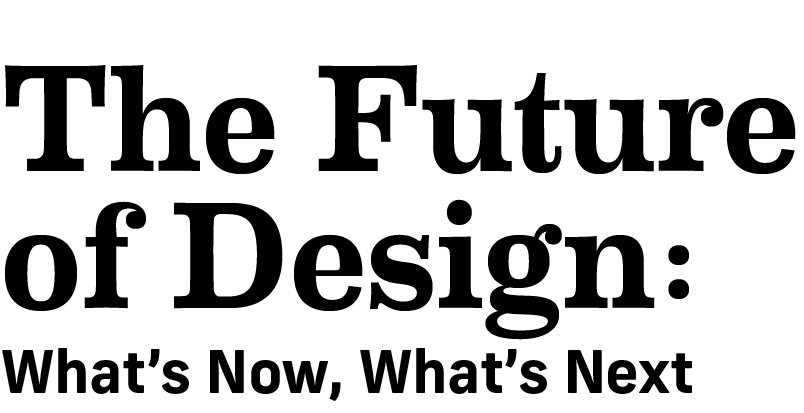EFA Next Wave Winner: Matthew Funk Barley, IIDA, NCIDQ, interior designer at RLPS Architects
Matthew Barley brings a distinctive narrative-driven approach to senior living design, transforming communities through storytelling and authentic materiality. His career began with an undergraduate degree in industrial arts education, where he developed a strong foundation in construction and traditional design craftsmanship.
He refined these skills as an industrial arts instructor at an Oregon High School and later deepened them with hands-on experience in custom construction and furniture design. After earning his master’s in interior architecture at the Rhode Island School of Design, he joined RLPS in 2016.
His recent work demonstrates a commitment to place-based design and community identity. For example, at Willow Valley Communities’ Southern Market in Lancaster, Pa., he led the design of Bar 1888, creating an intimate 30-seat venue within a restored food hall, which includes a metal canopy that complements the exposed ceiling truss while preserving the market’s historical significance.
Barley’s storytelling philosophy also shines through his dining repositioning at Medford Leas in Medford, N.J., where he led the interior design to transform three existing dining options into eight distinct venues, each celebrating the community’s accredited arboretum setting.
At Duncaster in Connecticut, slated to be completed in June 2026, he’s reimagining community spaces with locally sourced materials from Moore’s Sawmill, incorporating indigenous wood flooring and trim carpentry that honors New England’s craftsman tradition.
His collaborative approach extends beyond design through educational presentations and service on his local Historic Architectural Review Board, positioning him as both practitioner and advocate for thoughtful, sustainable design in senior living environments.
What drew you to a career in senior living design?
I was first drawn to working for a well-established firm with a great work environment. As I learned more about the senior living sector, my passion really grew. I’ve seen how powerful design can be in shaping not just spaces, but also the daily experiences of residents.
I especially enjoy helping communities tell their unique story through finishes and details. What’s most exciting to me is that it makes life better for residents and strengthens the community’s identity and marketing in a meaningful way.
What’s been your most rewarding project to date?
Each project has shaped me as a designer, but Willow Valley’s Southern Market in Lancaster, Pa., really stands out. Designing the bar for this project pushed my ability to adapt—at one point, the client said that if a structural slab had to be poured, in order to support the weight of the bar canopy, the bar as I envisioned it couldn’t happen.
That challenge, along with others from branding to scale, made the process exciting and collaborative. As top-quality dining becomes more important in senior living, creative, outside-the-box projects like Southern Market are not only rewarding to design but also a real asset from a marketing perspective.
What has surprised you most about working in this industry?
How differently each community is led. Some are brand new to the building and design process, while others are quite seasoned in working with designers. As a designer, it’s especially rewarding when an owner trusts us to take the lead and guide the vision.
What’s a challenge you’d like to see the senior living industry address in 2026?
I’d like to see more focus on urban or downtown-based senior living. What excites me about this model is that it doesn’t revolve around the car, it keeps seniors connected to their broader community, and it gives them easy access to great amenities—including restaurants, shops, and cultural experiences.
What’s the best piece of career advice you’ve received?
“It’s all about the people.”—Gregg Scott, RLPS partner emeritus
What’s one word your colleagues would use to describe you?
Several of my colleagues call me a “Renaissance Man.” I’ve always been naturally curious, which has taken me on a diverse path—starting in teaching, then construction, and now interior design. Each chapter has added a layer to how I think, solve problems, and create.
One defining moment was when I was 16 and helped build a library from sun-dried bricks in the Kenyan outback. That experience taught me the value of resourcefulness and creating something meaningful from the ground up. I carry that same mindset into design today, blending vision with craftsmanship and creativity with practicality.
What’s an unexpected item on your desk?
A 111-year-old book titled, “Selected Monuments of French Gothic Architecture.”[do we need the author?] It was part of a massive collection of books I purchased from an antique store as it was going out of business in Wallowa Ore.
Outside the office we’ll likely find you …
Rock climbing, gardening, or building furniture—pursuits that keep me grounded, creative, and always learning. Currently, I’m in the process of a gut and remodel of a 200-year-old farmhouse for our family’s next home.
It’s been great to have my wife and kids involved every step of the way, but, as with all renovations, it’s been an adventure!
What’s a must-have skill to succeed in senior living design?
I think it’s the ability to guide owners beyond what feels comfortable from a design perspective. It takes listening and building trust, but clients are often grateful for being pushed to think differently.
For example, at Medford Leas, we helped them expand from three dining venues to eight, and their CEO Jeremy Vicker shared how thankful he was for the fresh direction that transformed their community’s dining experiences.
Click here to read more about all of EFA’s 2025 Next Wave Award winners.
Check out the latest news, updates, and all you need to know for the 2026 EFA Conference + Expo here.









